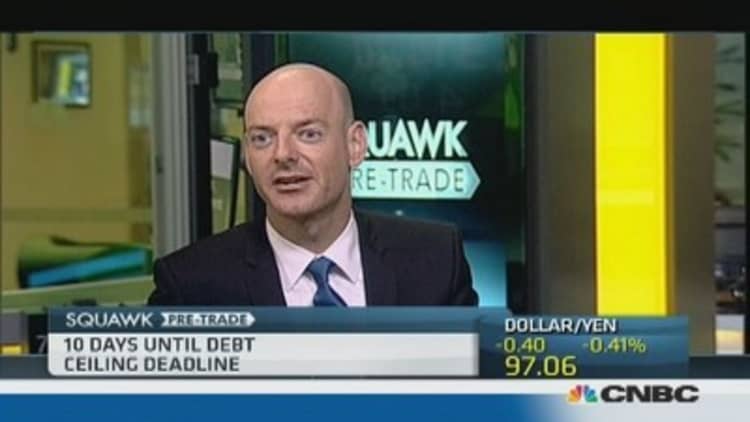The debt ceiling was growing ever closer, and the president was concerned. He asked Congress to raise the debt limit, which had happened uneventfully several times in the previous decade. But this time, a legislator pushed back, and confrontation loomed.
Ultimately, President Dwight Eisenhower failed to get the increase he sought in 1953, thanks to resistance from Sen. Harry Byrd. The government stumbled along for several months while Treasury Secretary George Humphrey worked on congressional leaders until they relented, and in August 1954, the debt ceiling was increased by $6 billion, to $281 billion.
The debt ceiling debate now heating up in Washington has plenty of precedents. By one calculation, the debt limit has been raised 94 times since 1940. On Ronald Reagan's watch alone, it hit $1 trillion for the first time, and rose 18 times.
Both Republican and Democratic presidents have gone to the mat over the issue. For example, President Lyndon Johnson's 1967 request to raise the debt ceiling was rejected.
But the current fight is different, according to Joseph Thorndike, a historian and the director of the Tax History Project at Tax Analysts—even different from Congress' refusal to raise the debt ceiling in 1953.
"The difference between then and now is that Harry Byrd knew pretty certainly that they could avoid default. Harry Byrd knew they weren't flirting with catastrophe," he said, and everyone knew that he fully understood the disaster that an actual default would cause.

Today, however, "voting records show the split between conservatives and liberals in the House is the widest in history," making compromise that much harder, according to Ethan Harris, co-head of global economics research at Bank of America Merrill Lynch.
(Read more: Debt ceiling battle: Why no one agrees on anything)
Some members of Congress think a default might not be all that bad. Ted Yoho, a Republican congressman from Florida, said recently that "I think, personally, it would bring stability to the world markets," since a default would show that the government is serious about bringing down its debt.
"Harry Byrd would have been horrified," Thorndike said. "He considered it a moral obligation" to avoid default.
Another issue is that the numbers are just much bigger now. It's one thing to juggle payments in the millions, or even tens of millions. It's another when in 11 months of a fiscal year, federal spending can reach an estimated $3.2 trillion. And right now, the government is perilously close to running out of money, while in 1953, the request to raise the debt ceiling came before that point.
"The budget deficit is large. A failure to raise the debt ceiling forces the government to balance the budget immediately," said Harris. "If it lasts for more than a week or so they will start missing payments on some major program: Social Security, Medicare, military pay or coupon payments on the debt."
Then there is the fact that the government in the 1950s used strategies to stay solvent that would be frowned upon today. As the current debt limit debate has heated up, the Treasury Department has "ruled out things they consider to be a trick, like the platinum coin, and also selling the gold at Fort Knox," Thorndike said. "But they actually did that in the 1950s."
(Read more: )
So far, investor concerns about the debt ceiling debate seem muted—though of course, that could quickly change. (The last big fight over the debt ceiling even led to the creation of a debt ceiling rap.)
(Read more: Bill Gross: We're buying what Fidelity is selling)
But the pace of government spending and the extreme divergence of views at the Capitol indicate that a crisis over the debt ceiling could be sudden. And while a debt ceiling debate may feel like déjà vu all over again, there are plenty of indications that a failure to raise the limit now would look nothing like 1953.
—By CNBC's Kelley Holland. Follow her on Twitter @KKelleyHolland.


